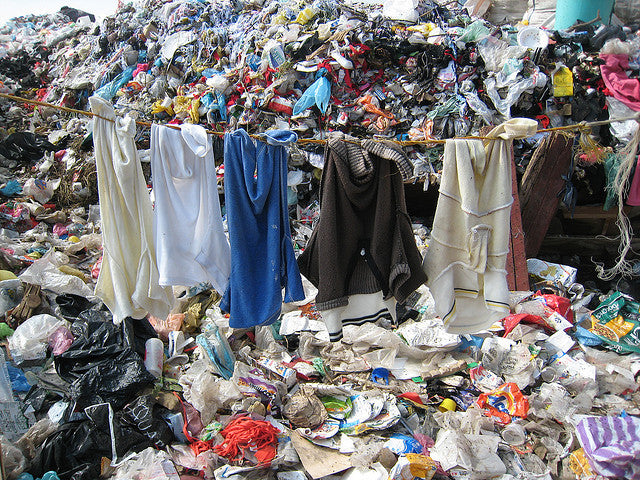After our recent involvement in the 'Let's Talk About Denim' panel discussion at ACMI, following their screening of Weaving Shibusa (a very good documentary on Japanese Denim) we felt it worth delving a little deeper into the value of good clothing; what makes it valuable and why is it important?
At last count 1.2 million tons of clothing ends up in Australian landfill every year. Let’s take a moment to think about that. That’s the weight of over half a million cars, the weight of 15 million humans or 31,000 Boeing 747’s. Every year. And this is just the end result of a process involving production, water usage, transportation and labour. It’s easy to forget, when confronted with a airport hanger-sized building full of clothing the economic and human cost of each individual garment.

I do not doubt the good intention of generations preceding us, working towards a future in which we could have more of what we wanted, when we wanted it, and for less. But even in their wildest dreams I wonder if they could have imagined the mass market retail giants we have spawned. There was a time, so we are told, when the value of an item corresponded directly to its worth. Not only are these terms becoming ever-difficult to define, but the relationship between becomes ever-more tenuous. Somewhere along the way we lost touch with what we consume, which, in turn, is changing how we consume.
But 'it’s expensive’ I hear you cry. Well, yes and no. And stop interrupting. My partner introduced me to a wonderful concept she uses to justify purchasing things she can’t afford. It’s called ‘cost per wear’, this is where you divide the cost of an item by the amount of times you expect to wear it. I have done this with my Oliver Peoples spectacles and by my calculation, the company currently owes me $4,567 and counting; I am yet to hear back from their finance department.
Whether I, or our shared closet space, subscribe to her model is beside the point. I have found the idea useful in judging an item’s worth on the amount of solid wear I expect it to give me. Items such as jackets, jeans and boots are other prime examples of this principle and the old saying 'buy cheap, buy twice' springs to mind.

Let’s not forget that the cost of a well manufactured garment is relative. As a small company producing small runs, factory time is expensive. Cheap clothing is cheap due to an economy of scale. 10,000 t-shirts are cheaper to produce per unit than 1000, and more appealing to large factories looking to fill their production time. Not to put too fine a point on it, if you’re concerned about the cost of good quality clothing, the blame lies solely with mass-market, high street chains continually striving to make more for less to increase profit margin.
Current generations get a bad rap for a supposed complacency towards socio-economic issues, but look a little harder, at a company like Tanner Goods or Knickerbocker MFG for example, who are working tirelessly to cut out the middle man. At 21, Andrew Livingstone and co. purchased lease and vintage equipment at a New York factory to produce great quality clothing on their own terms. Alongside their own brand, they produce garments for a number of other brands who are trying to keep their manufacturing onshore. So when looking at that price tag it’s not simply an investment in clothing you’re contemplating, but a future of young, skilled workers, and a vote towards the progression of sustainable and ethical manufacturing.

The USA has felt the sting of offshore manufacture more than most, which is perhaps what fuels the fire of the ‘Made in USA’ tag. A new generation of quality USA-made goods, Kickerbocker MFG, Runabout Goods and Tanner Goods sit side by side with time-trusted giants Filson, Jacob Bromwell, PF Flyers, Wolverine and Red Wing on the shelves here at P&P.

There was a time when the only way to make something was to make it well. Now that this is no longer the case, the responsibility lies with consumers to use our purchases to ‘vote' for the kind of sartorial future we want. It is a mentality which is infectious and conducive to a calmer, more efficient lifestyle. Investing in products you can rely on time and time again reduces the amount of time and money spent replacing items, instead allowing you to add to a growing collection of trusted pieces in a wardrobe that represents you.
Even if only by default, previous generations have left us vintage shops full of beautifully aged, well-crafted workwear, military wear and suiting. I often wonder what will remain of our legacy; a patina’ed pair of jeans awaiting a new owner or a polyester suit hanging precariously over a plastic bin bag? I sincerely hope the former.

In the spirit of longevity we offer a full denim repair service in store through Anthill Workshop. His magic hands will darn your crotch blow outs, rips and tears back to their former glory - see his work over at his instagram


